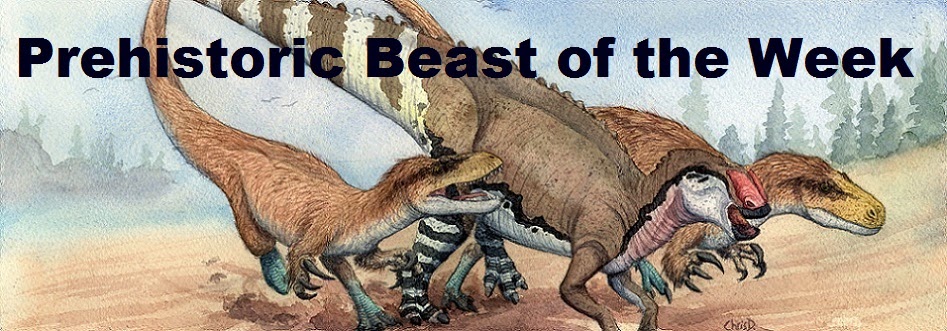There is much debate surrounding why the Irish Elk's antlers were so large. The most likely answer is probably sex. Like most species of animals with antlers, it is likely that only male Megaloceros had them. (Few exceptions exist, like Reindeer, where females also have antlers.) Sexual selection probably pressured the males to evolve more impressive antlers over time to attract the females and to combat rival males. Despite how antlers this large seem like they would have been more of a burden than an advantage in life, as long as they increased a male's chances of mating before he dies, they would continue to be passed on. This is actually the case with most animal courtship displays. They communicate that the individual sporting them is healthy enough to thrive despite the burden, and therefore is worthy of being chosen for mating by potential partners.
 |
| Megaloceros skeleton at the Natural History Museum in Dublin, Ireland. |
Some scientists proposed that the huge antlers may have been the Megaloceros' ultimate demise, regardless of how sexy females found it. This was proposed for a few reasons. The first is that the antlers were believed to be so wide that towards the end of the ice age, when there were more trees and foliage growing, made it difficult for male Megaloceros to maneuver in their environments, who were more adapted to open tundra landscapes. Another hypothesis is the antlers became too expensive to maintain. Antlers, unlike horns which are part of an animal's skull, fall off and regrown every year. In order to grow such large structures within a period of just a few months, the animal must consume more nutrient-rich food. Modern deer have even been observed and documented killing and eating other animals (yup, predatory deer) to supplement their diets during this rapid growth stage. Don't believe me? Check out this video. Also notice that the deer is in the process of growing a new set of antlers. So imagine how much nutrient rich food, plant or animal, Megaloceros must have needed to get in order to maintain itself during this time. Now imagine the dilemma it must have faced when its environment, including its food sources, suddenly changed at the end of the ice age.
The last hypothesis about their extinction is common for most large animals that lived during the end of the Pleistocene; over hunting by humans. We know that our ancestors probably hunted them sometimes thanks to Megaloceros appearing in cave paintings, but there is really no solid evidence that humans were the exact cause of their extinction.
 |
| Painting of Megaloceros done by prehistoric humans found at the Cougnac Caves in France. Note how there are individuals with and without antlers shown. Also note the hump over the shoulders and the dark pattern at the top of the neck and on the body. Photo found at Don's Maps. |
Perhaps one the coolest things about Megaloceros, is since it lived alongside humans, we have hints of what it looked like when it was alive from those humans in the form of cave paintings! On a cave wall in France that could be as old as 22,000 years, what are almost certainly Megaloceros are heavily featured. They were painted with and without antlers, supporting the idea that females did not have them, unlike reindeer. Those people also depicted them with a prominent hump over the shoulders, which must have been full of fat, since the actual skeletons of these deer do not suggest such a feature. Lastly, the paintings also include dark markings under the chin and also across the body in two stripes originating from the hump. Some argue these are meant to represent the animal's actual coat pattern.
References
Gould, Stephen J. (1974): Origin and Function of 'Bizarre' Structures - Antler Size and Skull Size in 'Irish Elk', Megaloceros giganteus. Evolution 28(2): 191-220.
Lister, A. M. 1994. The evolution of the giant deer, Megaloceros giganteus (Blumenbach). Zoological Journal of the Linnean Society 112, 65-100.
Lister, A. M., Edwards, C. J., Nock, D. A. W., Bunce, M., van Pijlen, I. A., Bradley, D. G., Thomas, M. G. & Barnes, I. 2005. The phylogenetic position of the ‘giant deer’ Megaloceros giganteus. Nature 438, 850-853.
Moen, R.A.; Pastor, J. & Cohen, Y. (1999): Antler growth and extinction of Irish Elk. Evolutionary Ecology Research 1: 235–249.Stuart, A.J.; Kosintsev, P.A.; Higham, T.F.G. & Lister, A.M. (2004): Pleistocene to Holocene extinction dynamics in giant deer and woolly mammoth. Nature 431(7009): 684-689.

.jpg)
Can you Do Liinsternus some time?
ReplyDeleteHow about today?
ReplyDeleteBlog nice
ReplyDelete